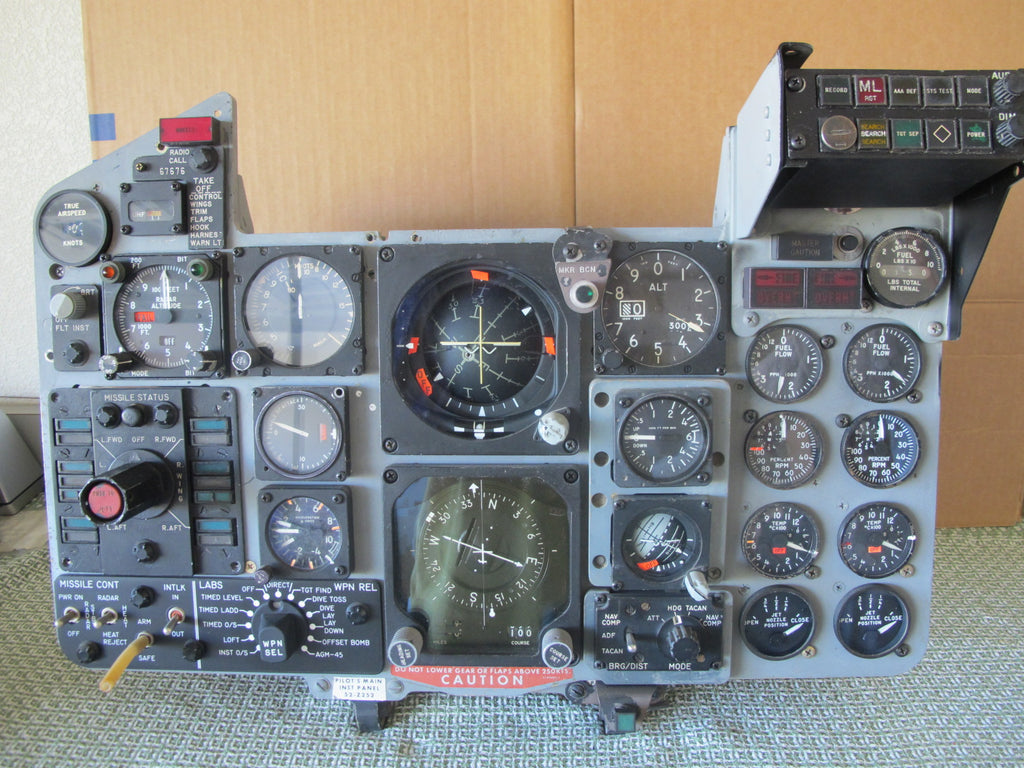

It is a shame you do not get to see many of these beasts flying around here today - still a stunning aircraft and a classic shape. have just been placed in without gluing as when I have more time I would like to finish them off better - some of the cockpit colours need toning down a bit as well. I wil try and colour them up a little more at some point, they need some "shiny" worn parts and although there is already some blue heatstaining done the photo does not show it up very well. One slight niggle is that the afterburner cans could have benefitted with a bit more detail - but it is tough to knock the quality of this kit.

There's a fair bit hanging from the bottom of this bird that's fer sure. I didn't think I would have the patience but it was worth it.

I was kind of pleased at getting rid of all the seams on the weapons. I doubt I will have any more time before the weekend to do anything else or even get some better photos for the completed section but I hope these show you enough for now. Certain areas of the model need a bit more cleaning up and attention but for now I have to say I am very happy so far and Tamiya have (again) made a fab large scale model. I was only able to base paint all the weapons and give everything a very quick oil paint based wash. When I get some more time again probably in the new year I may go back and add some more weathering detail as there is just so much to this model that you could go to town with. With the group build deadline looming this weekend I have had to quickly get the model all together a little more quickly than I would have liked - my fault though due to my lifestyle - as there has been plenty of time. All other paints were Xtracrylics and a dash of Valejo for brush detail in the cockpit. I just kept going back over with various shades in more of a random fashion. To answer your question about the Alclads - I used a mixture of shades, mainly Stainless Steel, Magnesium, Pale Burnt Metal and with Jet Exhaust in selected patches to give the darker shades. I just supplied the glue, paint, time, effort and enough square footage of my room to hold a 5 a side footy match Yes - the model is 100% out of the box including all markings & decals. I really like the effect you achieved on bare-metal areas! What shades of Alclad did you use for the bare-metal tail sections? Did you use a laquer, enamel, or acrylic paint for the black undersurface? As enthusiastic as I am about modelling Phantoms (especially MARINE Phantoms), I must admit that replicating the metal areas daunts me. Are the markings and stencils kit-supplied decals as well? It strikes me that this kit has minimal aftermarket and maximal modeller technique to bring out all that wonderful detail. There aren't enough " ph" adjectives after " phabulous" and " phantastic" to describe this Phantom! Technical data (version F-4E): Maximum speed: 2370 km / h, speed of climb: 210 m / s, maximum ceiling 18300 m, maximum range: 2600 km, armament: fixed - 1 20mm M61A-1 cannon, Suspended - up to 7255 kg of bombs and rockets.I don't know how I missed this thread earlier (and entire F-4 group build). In total, 5,057 F-4 Phantom aircraft were built. The F-4 took part in the Vietnam War, the conflicts in the Middle East (1967, 1973) and the Iran-Iraq War (1980-1988). The latest versions are the F-4F and F-4G Wild Weassel - these are electronic warfare planes and designed to fight the enemy radars. Reconnaissance versions were also created: RF-4B, RF-4C and RF-4E. The next version is the F-4E, produced since 1967 as a long-range fighter. The first versions are models from A to D intended for fighter-bombers. The F-4 Phantom turned out to be a very successful machine, produced in several versions, exported to many countries and produced under license. Originally, the F-4 was intended only as a stormtrooper, but from 1955 on, the design work went towards meeting the US Navy's need for a new on-board fighter.
#TAMIYA F4 PHANTOM COCKPIT SERIAL#
The flight of the prototype took place on May 27, 1958, and serial production began in 1961. The McDonnell-Douglas F-4 Phantom is a long-range, twin-engine, two-seater multi-role fighter designed for operations in difficult weather conditions.


 0 kommentar(er)
0 kommentar(er)
